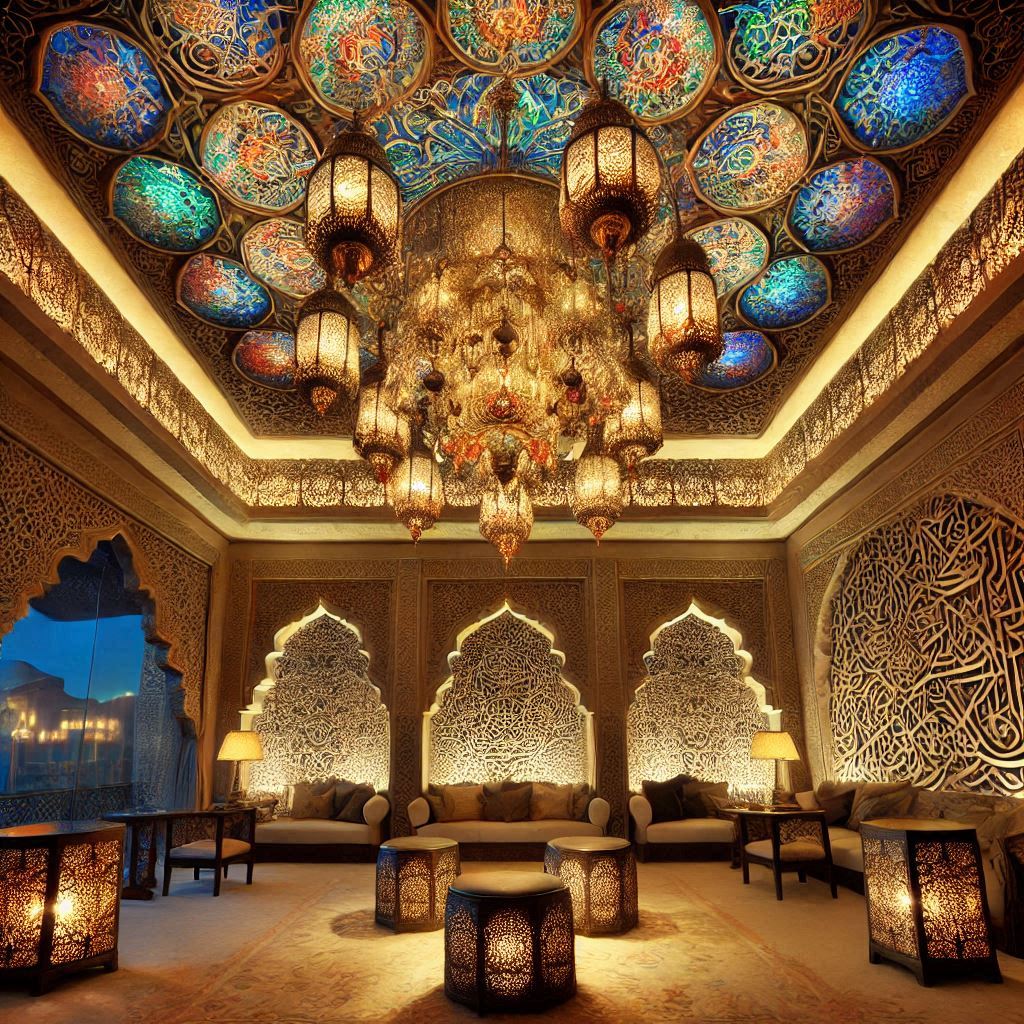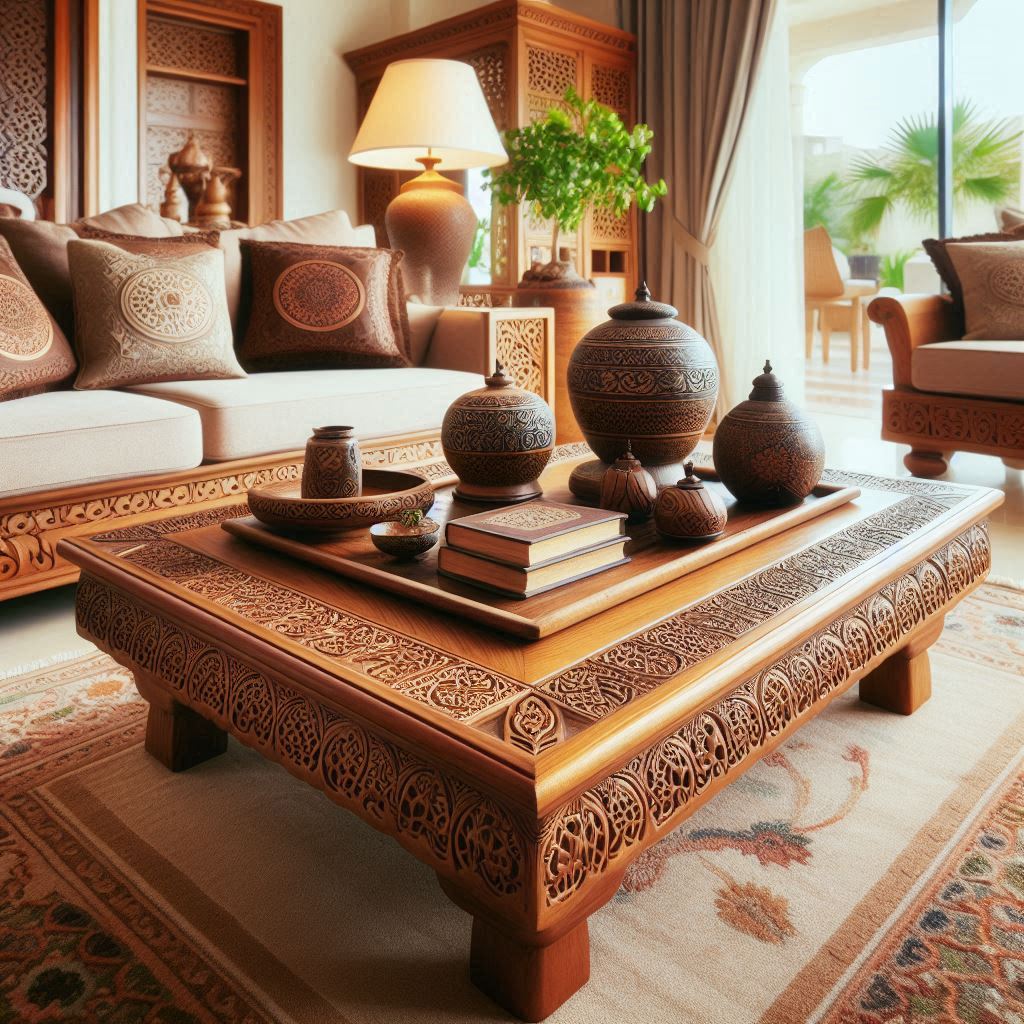Arabic interior design is all about elegance, tradition, and beauty. But where do you even start?

Do you wonder how to blend those stunning patterns, graceful arches, and earthy colors? Or maybe you’re curious about adding a touch of luxury to your home without overdoing it?
At first, Arabic interior design might seem tricky. However, it’s actually simple when you break it down into steps.
Why stress over complicated ideas when there’s an easy way to master this timeless style? Wouldn’t you love to transform your space into something breathtaking yet practical?
With just seven easy and simple steps, you can create a home that feels warm, rich, and welcoming.
So, are you ready to discover how Arabic interior design can turn any room into a masterpiece? Let’s dive in and unlock the secrets to achieving this look effortlessly!
What Makes Arabic Interior Design Perfect for Your Home?
Arabic interior design brings a magical mix of elegance and culture to any space. It’s all about bold patterns, intricate details, and warm colors that create a cozy yet luxurious feel.
To start, you can add traditional rugs, lantern-style lights, or carved wooden furniture. These elements instantly bring an authentic vibe to your home.
Next, focus on arches or curved designs in windows and doorways. These features help capture the true essence of Arabic style.
Additionally, don’t forget to include soft cushions and layered textiles. These add both comfort and charm to the space.
Furthermore, using earthy tones like terracotta, gold, and deep blues ties everything together beautifully. These colors create a warm and inviting atmosphere.
By following these simple steps, Arabic interior design can completely transform your space. It’s a timeless and inviting style that works perfectly for living rooms, bedrooms, or even offices.
Why Should You Try Arabic Interior Design at Home?
Arabic interior design is more than just a style; it’s a way to make your space feel warm, elegant, and full of life. But how can you achieve this beautiful look without making it too overwhelming?
The good news is that with a few easy steps, you can bring the charm of Arabic design into your home.
Imagine your living room glowing with intricate patterns, cozy textiles, and soft lighting. Doesn’t that sound like a peaceful retreat?
Even better, you don’t need to be an expert to make this happen. With the right ideas, anyone can create a space that feels both luxurious and welcoming.
Whether you’re adding bold details or simple accents, Arabic interior design lets you create a unique and inviting space.
So why wait to transform your home into a masterpiece? Keep reading to discover 7 easy and simple steps that will help you master this stunning design style.
How Can You Create a Cozy and Elegant Arabic Interior Design?
Arabic interior design is known for its luxurious, timeless appeal. It blends rich colors, intricate patterns, and warm textures to create a welcoming and opulent atmosphere. If you’re looking to bring Arabic interior design into your home, follow these 7 easy and simple steps to master this beautiful style.
1. Start with Rich Colors
Arabic interior design is famous for its use of deep, earthy tones that create warmth and comfort. Rich colors like gold, terracotta, warm browns, vibrant reds, and royal blues are staples in this design style.
When choosing wall colors, you can go for deep shades that bring drama to the room, or use softer tones for a more subtle ambiance. For example, a warm beige or terracotta can be used on walls, while gold accents in the form of frames, lamps, or vases can brighten up the space.
Incorporate jewel tones, such as emerald green, ruby red, or sapphire blue, into your decor. These colors bring richness and vibrancy to any room. Using these shades in throw pillows, curtains, or upholstery can enhance the Arabic theme and create an inviting environment.

2. Incorporate Intricate Patterns
One of the signature features of Arabic interior design is its use of intricate patterns, often inspired by Islamic art and architecture. Geometric shapes, floral motifs, and arabesque designs are commonly found in everything from furniture to fabrics.
To bring this into your home, consider adding a patterned rug to your living room or hallway. You could choose a rug with traditional Arabic geometric patterns or opt for one with bold, rich colors to act as a focal point in your space.
Patterns are also visible in textiles, like cushions, drapes, and upholstery. For example, silk cushions with geometric or floral embroidery can elevate your space and add visual interest. If you want to go a step further, consider incorporating patterned wall tiles or mosaics in your kitchen or bathroom to complete the look.

3. Use Decorative Lighting
Lighting in Arabic interior design is not just about functionality, but also about creating an atmosphere. Decorative lighting, such as Moroccan lanterns, pendant lights, or chandeliers, is a great way to bring a touch of Arabic elegance to your home.
These lighting fixtures often feature detailed metalwork or colored glass that casts beautiful patterns on the walls. When placed strategically, they can create a magical effect in your space. For instance, a large, ornate chandelier in the center of the room can be both a focal point and a source of ambient light.
Don’t forget candles and lanterns. In Arabic interior design, these small touches are used to create a cozy and intimate atmosphere. Try placing scented candles on coffee tables, side tables, or shelves for a warm glow.

4. Add Plush Fabrics
Fabric plays an important role in Arabic interior design, where luxurious, soft materials like velvet, silk, cotton, and brocade are used extensively. These fabrics add a sense of opulence and comfort to any space.
Start by incorporating velvet cushions or silk throws on your sofas or beds. The rich texture of these fabrics gives the room a more sophisticated and welcoming feel.
You can also layer fabrics, combining different textures like cotton and linen with plush velvet or silk. This creates a more dynamic and cozy atmosphere. When choosing curtains, opt for luxurious materials that flow gently to the floor and use bold, vibrant colors or patterns to complement the rest of your decor.

5. Embrace Arches and Curved Shapes
Arches and curved shapes are key features in Arabic interior design. These shapes soften the overall aesthetic and add elegance and flow to the space.
To incorporate arches, try installing arched doorways or windows in key areas of your home. Arched doors leading to rooms or even a hallway can create a seamless flow between spaces.
If structural changes are not possible, add arched mirrors, curved furniture, or even round coffee tables to mimic the look. Curved shapes are especially important in Arabic design, as they create a feeling of balance and harmony. Think about adding an arched mirror above a fireplace or a rounded dining table to emphasize these flowing shapes.

6. Include Wooden Details
Wood is an essential material in Arabic interior design, known for its warmth and texture. Intricate woodwork is often seen in furniture, doors, and window frames. Look for pieces that feature carved wood or intricate inlays, as these reflect the traditional craftsmanship of Arabic culture.
For example, a wooden coffee table with hand-carved details can serve as the centerpiece of your living room, or you can use smaller wooden accessories such as trays, picture frames, and lamps to complement the space.
Wooden accents also bring a natural element to the design, balancing the opulence of other materials like metal and glass. Try adding a wooden chair with intricate carvings or a wooden bookshelf to bring a sense of tradition and warmth to your home.

7. Create a Cozy and Inviting Atmosphere
The heart of Arabic interior design is creating a space that feels both welcoming and comfortable. Arabic interiors are known for their relaxed and cozy atmosphere, where guests can unwind and enjoy the beauty of their surroundings.
To achieve this, arrange your furniture in a way that encourages conversation and connection. Add plush seating areas with cushions, throws, and low tables where family and friends can gather.
Consider layering different textures and materials to create a harmonious balance. Soft fabrics, intricate rugs, wooden furniture, and decorative lighting all contribute to creating a cozy, inviting environment. The goal is to make your space feel like a sanctuary, a place where you can relax and enjoy the beauty of Arabic interior design.

Conclusion
Mastering Arabic interior design can completely transform your space into something elegant and inviting. By following these 7 easy steps, you can create a home filled with rich colors, intricate patterns, and luxurious textures.
Moreover, the use of decorative lighting, plush fabrics, and wooden details will add warmth and sophistication to any room. Additionally, embracing curves and arches will help bring balance and flow to your home.
Whether you’re starting small with a few decorative items or redesigning an entire room, Arabic interior design offers endless possibilities to make your space feel special. It’s important to remember that this style is not just about aesthetics—it’s about creating an environment where you and your guests can feel relaxed and inspired.
So, are you ready to create your dream home with Arabic interior design? By implementing these simple steps, you’ll add beauty, comfort, and a touch of luxury to your surroundings. Start transforming your space today!
